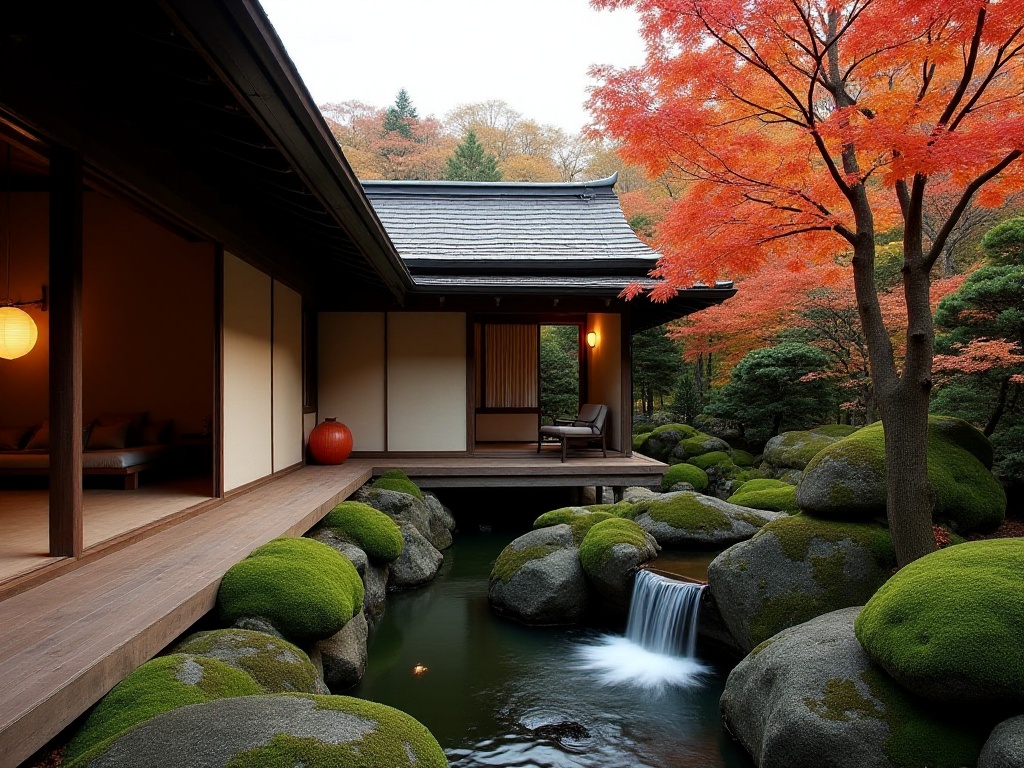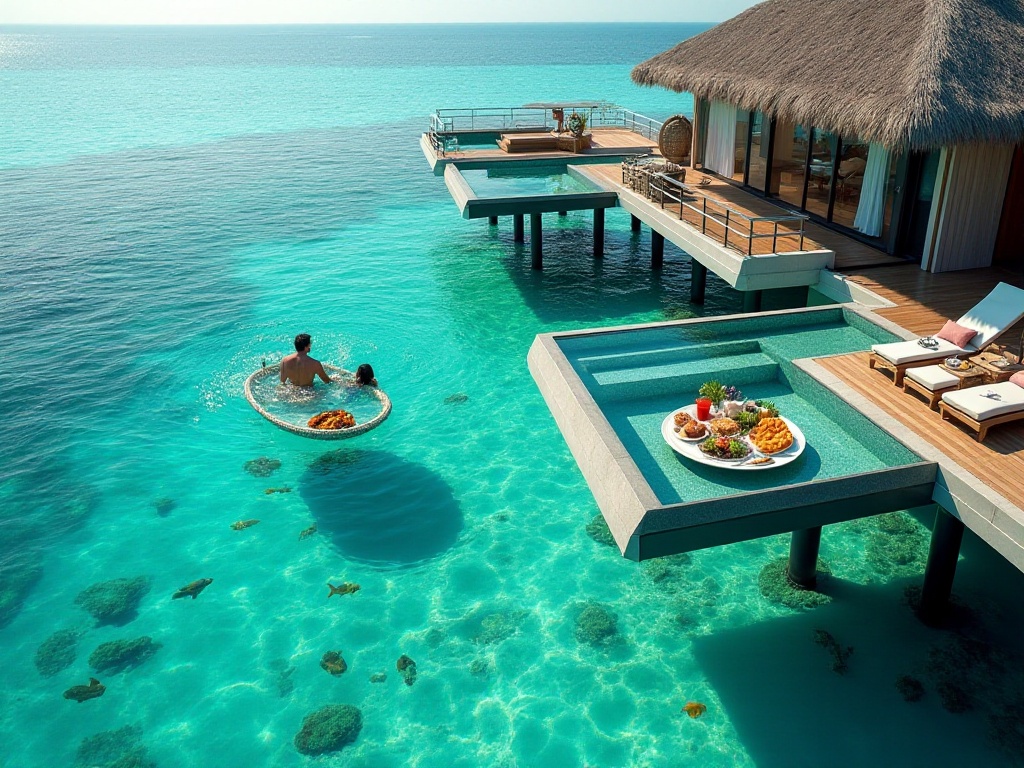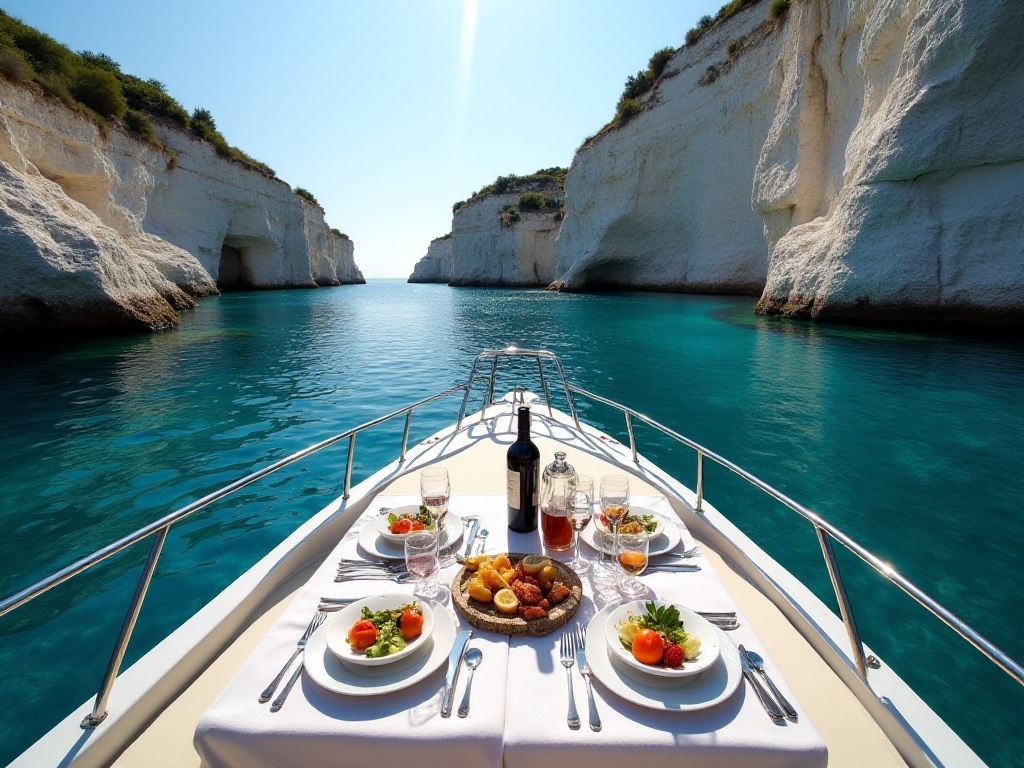Introduction
Hey travel enthusiasts, today I want to discuss a fascinating topic - luxury travel. Have you ever dreamed of staying in an overwater villa in the Maldives or chartering a private yacht in the Mediterranean? I understand your feelings because I too have fantasized about experiencing those enviable high-end trips I see on social media. As a travel blogger who has visited over 30 countries, I spent three years deeply researching the luxury travel market, going from complete novice to now being able to craft perfect itineraries for clients. During this time, I discovered that the luxury travel market has many hidden intricacies, which I'll explore with you today.
Initially, my understanding of luxury travel was quite superficial - I thought it was just about staying at expensive hotels and flying first class. It wasn't until my first visit to the Burj Al Arab in Dubai, where I experienced butlers making my bed, preparing personalized toiletries, and even remembering my preferred drinks, that I realized luxury travel's essence lies in personalized prestigious experiences. As I visited more countries, I began systematically studying luxury travel products worldwide and found this market to be far more complex and interesting than I had imagined.
In the following content, I'll share not only market data and product features but also insider information you won't find on travel websites. Whether you're eager to try luxury travel or just curious about this seemingly unattainable world, I believe this article will provide valuable insights.
Market Status
When it comes to luxury travel, many people's first reaction is "that's too expensive." But did you know? The luxury travel market has been undergoing dramatic changes in recent years. According to the latest data, the global luxury tourism market reached $1.2 trillion in 2023 and is expected to exceed $1.5 trillion by 2025. This is no small figure - it indicates that many global consumers are willing to pay for exceptional travel experiences.
I remember five years ago when I first started as a travel blogger, I could count on one hand the number of friends willing to spend over 50,000 yuan on travel. But now? My social media feed regularly features friends showing off 100,000 yuan travel bills. Most amazingly, the age range of these travelers keeps getting younger.
In China, those born after 1995 and 2000 are becoming the main force in luxury travel. During last year's Singles' Day shopping festival, sales of luxury travel products priced over 100,000 yuan on a well-known OTA platform increased by 238% year-over-year. What does this data tell us? The new generation is more willing to pay for quality travel experiences. Unlike their parents, they're not saving money for houses and cars, but rather investing in experiences that bring immediate satisfaction.
I've interviewed dozens of young people who choose luxury travel, and they generally express that "rather than waiting until retirement to enjoy life, it's better to enjoy it while young." This shift in consumer mindset is one of the key factors driving the luxury travel market's explosion.
Additionally, the rise of social media has played a crucial role. We live in an era of sharing photos, where unique travel experiences often bring more likes and envious glances. One of my clients frankly told me that half the reason she chose a Maldives top-tier resort's water villa was to share it on social media platforms.
The players in the luxury travel market are also rapidly changing. Traditional travel agencies are gradually being replaced by boutique travel consulting companies. These emerging companies are usually smaller but provide more precise and personalized services. I myself transformed from a regular travel blogger to a luxury travel consultant because I found clients needed professional advice more than simple itinerary arrangements.
Notably, luxury travel is no longer exclusive to the older wealthy generation. According to my client data analysis, young people under 30 now account for over 40%. These young clients are typically successful professionals, entrepreneurs, or family business inheritors. Their definition of luxury also differs from the older generation, focusing more on uniqueness and cultural depth rather than just luxury brands and star-rated hotels.
In recent years, several interesting niche trends have emerged in the luxury travel market. The proportion of women traveling alone luxuriously is rising, now accounting for about 25% of the market. These independent women are usually career successful and view luxury travel as a way to reward themselves and relax. Additionally, family luxury travel is growing, with more parents willing to take their children to experience high-end resort activities, hoping to create unforgettable childhood memories.
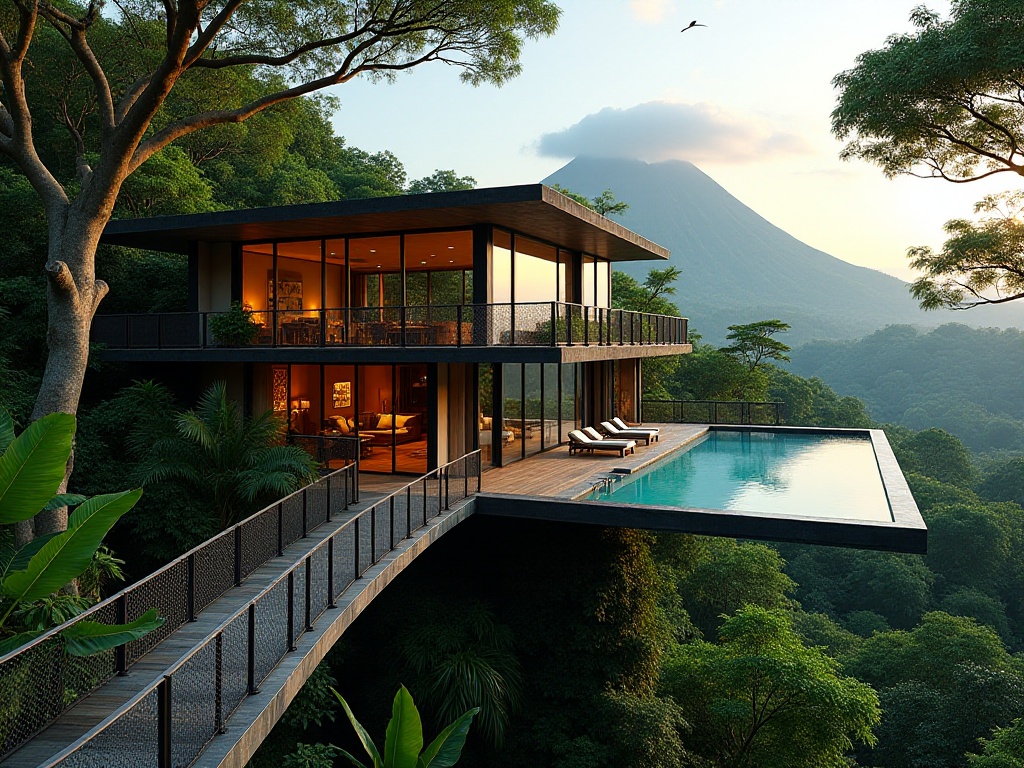
Product Features
I remember being overwhelmed by various service providers and price ranges when I first encountered luxury travel products. Let me help you understand this seemingly complex market in the simplest terms.
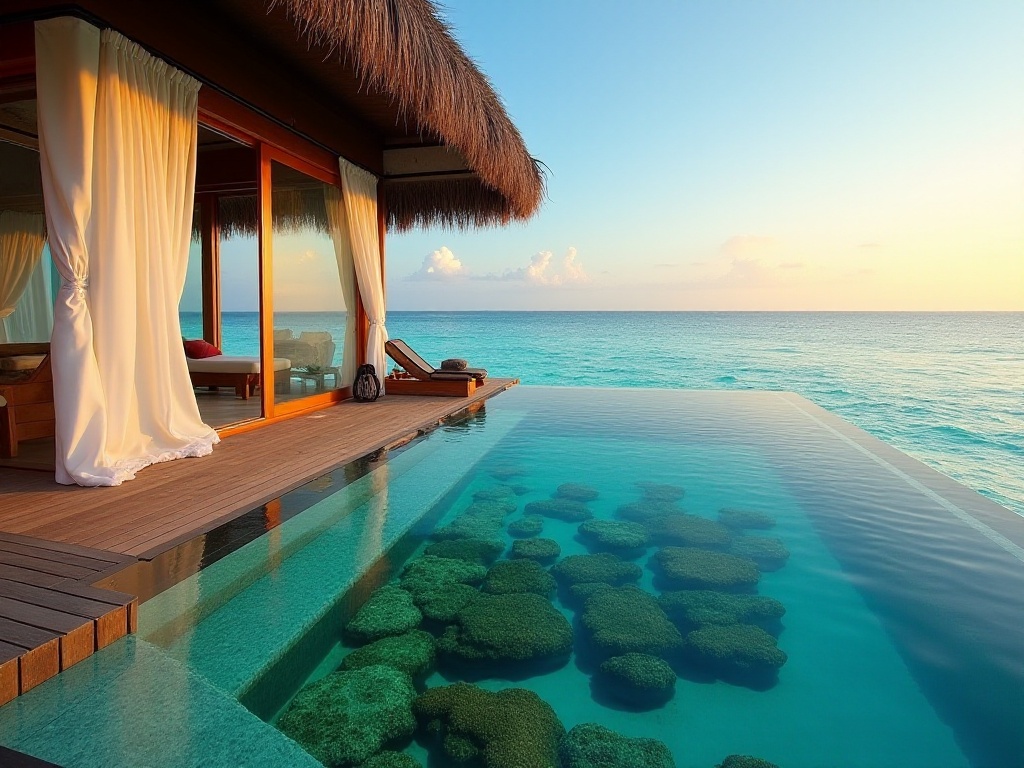
Custom Tours
Custom travel can be considered the "big brother" of the luxury tourism market. Established luxury travel agencies like Abercrombie & Kent start their African safari custom itineraries at 200,000 yuan. Don't think it's expensive - they're truly worth the price.
For example, last year I helped plan a Tanzania honeymoon for a couple through A&K. They not only arranged the top jungle resorts but also provided a professional photographer for the entire trip. What impressed me most was that they even planned a private dinner on the Serengeti plains, inviting Maasai warriors to perform traditional dances. Would you say that's worth it?
I witnessed firsthand how detailed the service was for this couple. From the moment they set foot in Tanzania, someone was responsible for all their needs. At the Four Seasons Serengeti Lodge, each room had a private pool and viewing deck for directly observing wildlife. After learning the bride loved photography, the hotel butler even prepared a guide for the best selfie angles and wildlife spotting times.
The charm of custom tours lies in their unlimited possibilities. I once arranged a European art tour for an art collector, including private visits to the Louvre after closing hours, studio exchanges with Venice local artists, and leather crafting lessons at a historic workshop in Florence. These experiences aren't available to ordinary tourists and require travel advisors to utilize their networks and professional knowledge.
Another feature of custom tours is their high flexibility. I remember a client suddenly became interested in a Tuscan wine during their Italy trip. Our local team arranged a private meeting and tasting with the winery owner within 24 hours and helped order several cases of limited edition wine to be shipped directly home. Such last-minute changes are almost impossible for regular tour groups.
Of course, there are reasons for custom tours' high prices. First, professional travel advisors need to invest significant time in researching and designing itineraries. A complete custom plan usually requires 3-5 revisions and involves coordinating 20-30 suppliers. Second, the costs of luxury hotels and private services are inherently high. Finally, there are many invisible services, such as 24-hour emergency support and standby local teams.
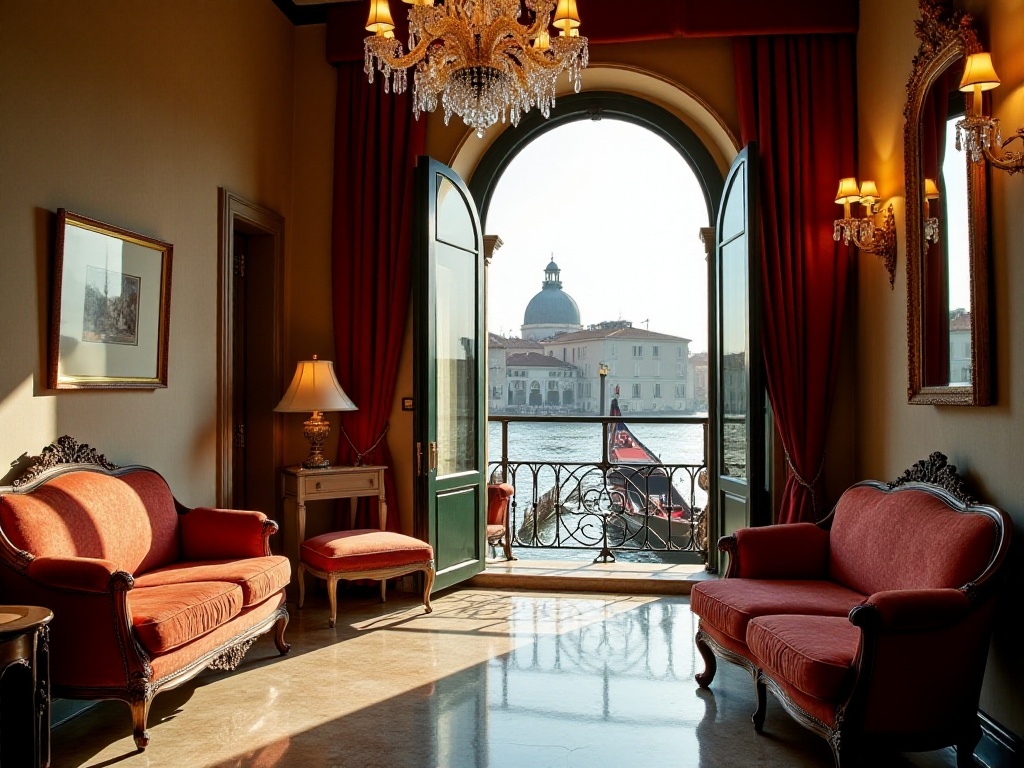
Theme Tours
Speaking of theme tours, private yacht charters are noteworthy. Luxury Vacations and Travel is especially famous for yacht services in the Mediterranean. A mid-sized yacht costs 150,000-200,000 USD per week, but it offers a completely different travel experience.
Last summer, one of my clients chartered a yacht to tour the Greek islands, equipped with a professional chef, diving instructor, and spa therapist. The best part was the complete freedom to stop at any island they wished. This travel style made their family relationships closer.
Their yacht was a 72-foot Sunseeker model with four suites accommodating 8 guests. Every morning, the chef would prepare a sumptuous breakfast according to their preferences. In the morning, they could explore underwater worlds at the best diving spots under the captain's guidance. They'd return to the yacht for fresh seafood lunch. In the afternoon, they could choose to dock at a remote island to explore hidden beaches and villages. In the evening, the deck would transform into a romantic outdoor restaurant for dinner while enjoying Aegean sunsets.
Golf theme tours are also popular in luxury travel. Imagine playing Scotland's most famous courses in a week, staying in castle-converted luxury hotels, and enjoying Michelin-starred restaurants and Scottish whisky in the evenings. Such itineraries, usually arranged by professional golf tourism companies like Kalos Golf or Perry Golf, cost around 20,000-30,000 USD per person.
Culinary theme tours are another popular luxury travel type. I once arranged a Japanese culinary tour for a couple of food enthusiasts, including private lessons with Tokyo's three-star Michelin sushi masters, traditional Kyoto kaiseki cooking experiences, and private tastings at top sake breweries. The 10-day itinerary cost nearly 150,000 RMB per person, but clients said it was a "priceless experience."
Adventure theme tours are one of the fastest-growing luxury travel types in recent years. Antarctica, the Arctic, Galapagos Islands, and Amazon rainforest have become new favorites for high-end travelers. These trips are usually operated by professional expedition companies like Natural World Safaris or White Desert, ranging from 100,000 to 500,000 RMB. I remember a client participated in White Desert's Antarctic expedition camp experience, staying in luxury dome tents with professional guides exploring ice caves and penguin colonies, enjoying Michelin-star chef-prepared dinners at the world's end.
Art and culture theme tours are increasingly popular among high-net-worth individuals. VIP tours during Art Basel, private visits to the Venice Biennale, or studio exchanges with local artists - these in-depth cultural experiences often need to be arranged through professional cultural travel agencies like Art Tours or Artisans of Leisure.
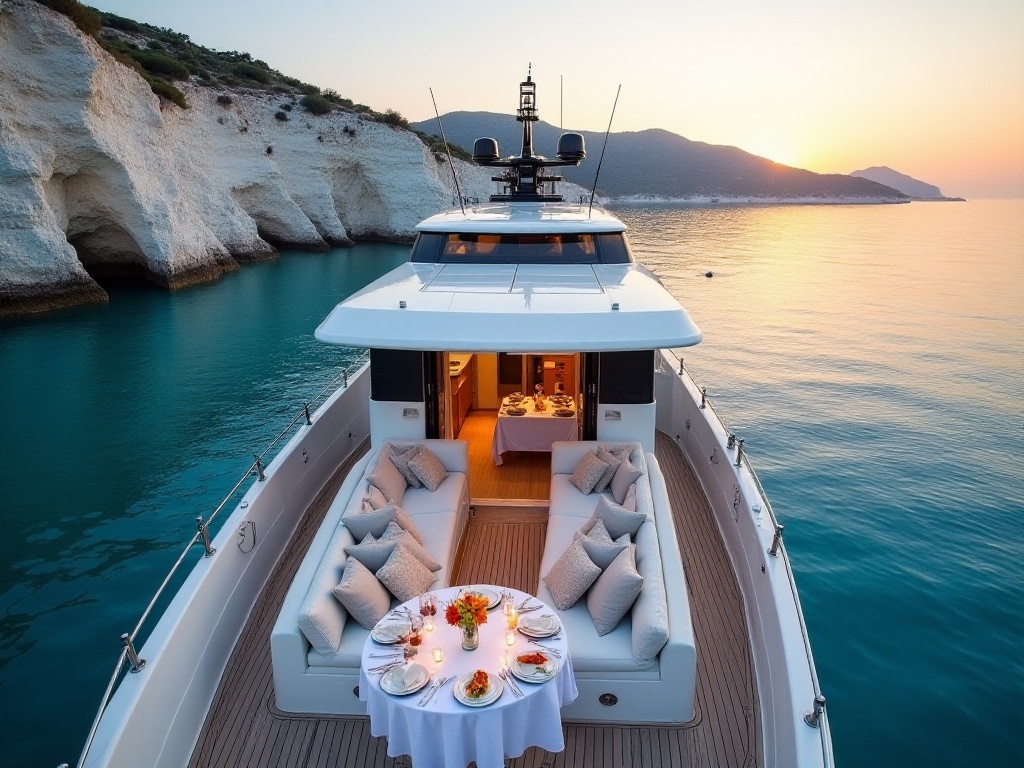
Hotel Resorts
When discussing luxury travel, we must mention those world-renowned top hotels and resorts. Unlike ordinary five-star hotels, true luxury hotels offer impeccable personalized service and unforgettable experiences.
Six Senses Zighy Bay resort in Oman is a perfect example. Guests can choose to paraglide from the mountaintop to the resort, arguably one of the world's most unique check-in experiences. Each villa has a private pool and butler service, with butlers arranging everything from private beach picnics to late-night stargazing massages. Last year, I took a family client there, and their children still talk about the "desert movie night" where the resort set up a private outdoor cinema on the dunes, complete with local snacks and hot chocolate.
In the Maldives, Soneva Jani's water villas feature slides from bedrooms directly into the Indian Ocean, and each villa's roof can automatically open for stargazing from bed. Worth mentioning is their chocolate and ice cream rooms, offering over 50 types of handmade chocolates and ice cream 24/7 - a paradise for sweet lovers. Prices range from 2,000-5,000 USD per night, usually requiring booking six months in advance.
In Africa, Singita Lebombo Lodge's design was inspired by eagle nests, with glass villas hanging on cliff edges allowing wildlife observation from bed. Their wine cellar houses South Africa's finest wines, and each guest has dedicated safari guides and trackers. An interesting detail is that the resort prepares guests' preferred books and music in rooms in advance.
Japan's Hoshinoya series of ryokans offers another kind of ultimate luxury experience. Taking Hoshinoya Hakone as an example, the inn has only 17 rooms but over 50 staff members. Each room has a private onsen and Japanese garden, with traditional kaiseki dinners customized according to season and guest preferences. Most special is their "pillow menu" offering 15 different materials and heights of pillows, ensuring the most comfortable sleep experience.
Castle hotels in Europe are classic luxury travel choices. Ireland's Ashford Castle, with over 800 years of history, has rooms decorated with antique furniture and artwork. The hotel's falconry school offers guests opportunities to learn this ancient noble sport, while dedicated vintage Rolls-Royces provide sightseeing services. I had clients hold a castle wedding there, where the hotel arranged a complete medieval-style ceremony including horse carriages, bagpipers, and traditional Irish dance performances.
Ultimate Experiences
In the world of luxury travel, some experiences are hard to buy even with money, requiring professional travel advisors' connections and resources. These "ultimate experiences" are usually the most memorable parts of luxury travel.
For instance, in Italy, through appropriate channels, you can arrange private visits to the Vatican Museums after closing. Imagine appreciating the Sistine Chapel's ceiling paintings alone, without other tourists, possibly even having the chance to interact with in-house restoration experts. Such experiences start at 10,000 euros but have limited annual spots available.
In Bordeaux, France, some top châteaux like Château Lafite Rothschild are usually closed to the public, but through professional wine travel advisors, you can arrange dinner with the château owner, visit private cellars, and even taste vintages never released to market. Last year, I took a client to a similar event where the château specially opened a 1959 Lafite for us, a priceless treasure in the market.
In Kyoto, Japan, there's an opportunity to dine with geishas or kabuki performers, an experience unavailable to regular tourists. Authentic geisha teahouses usually only accept guests with introductions, costing 3,000-5,000 USD per person, including multiple courses of traditional kaiseki cuisine, sake, performances, and interaction sessions.
In Morocco, you can experience a "thousand-star hotel" in the Sahara Desert - a luxury tent camp equipped with air conditioning, real beds, and private bathrooms, dinner prepared by French chefs, enjoyed under starlit skies. Professional astronomers guide you in stargazing with telescopes at night, and the next dawn offers hot air balloon rides overlooking golden dunes. The whole experience costs 1,500-2,000 USD per person, but that sense of silence and spectacle amid endless desert is priceless.
In Tibet, China, professional teams can arrange luxury camping experiences at Mount Everest Base Camp. Though conditions are limited by natural environment, they provide maximum comfort: high-altitude specialized sleeping bags, portable heating systems, private chefs preparing hot meals, and even portable oxygen equipment for altitude sickness prevention.
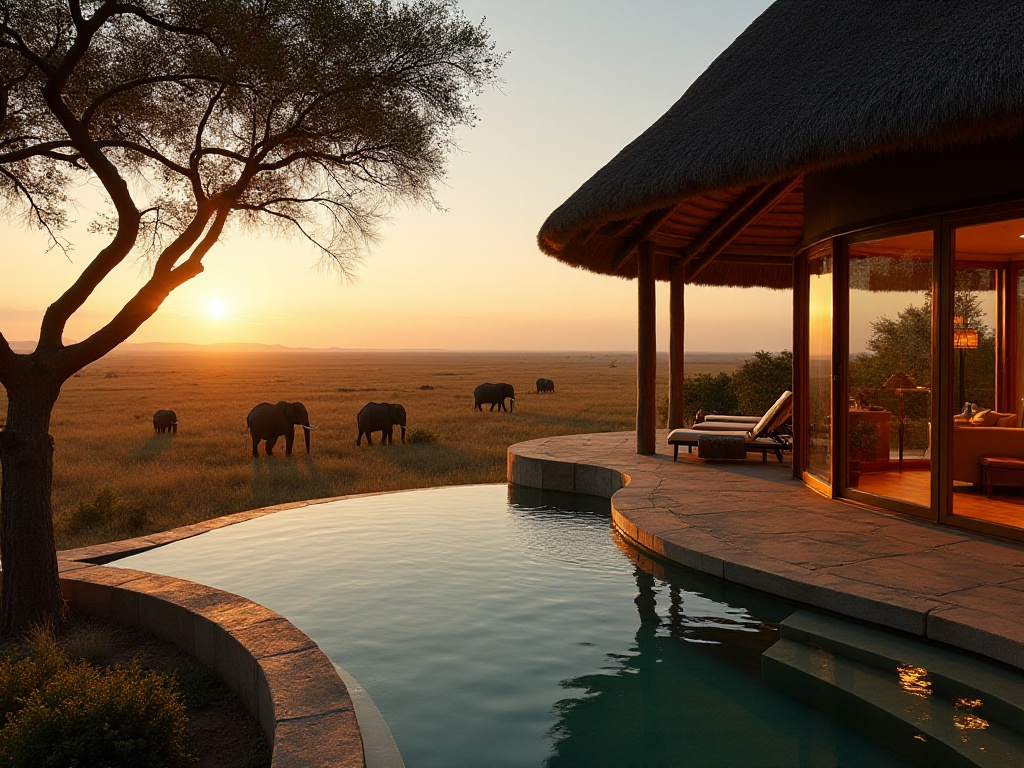
Price Analysis
Many friends are most concerned about pricing. I've organized a clear price range and analyzed why the same duration can have such large price differences between different destinations and services.
Asian routes are most interesting with huge price ranges. A 12-night Japan three-city tour starts at 8,719 USD, while a Thailand three-destination 12-night tour only starts at 2,449 USD. Why such a big difference? Because luxury hotels and service costs in Japan are indeed much higher than Southeast Asia.
Taking Japan as an example, one night at top ryokans like Hoshinoya or Aman Kyoto costs between 1,000-2,000 USD, usually not including dinner. Japanese service staff wages are high, and ingredients emphasize seasonality and quality. Add the yen appreciation factor, making Japan luxury travel costs consistently high. However, you get impeccable service quality and cultural experience depth. My clients often comment that "Japanese service makes one feel respected to the extreme."
In comparison, Thailand has international luxury hotel brands like Aman and Four Seasons, but overall cost structure is much lower. A five-star resort suite during peak season is only 400-800 USD per night, usually including breakfast and some activities. Thailand's luxury spa experiences might cost only one-third of similar services in Japan. That's why Thailand remains a top choice for "entry-level" luxury travel.
In Europe, classic Italian three-city 12-night routes start at 5,589 USD, while England-France dual-city 8-night tours start at 4,189 USD. But honestly, these are just base prices; adding Michelin restaurants and private tours would increase the budget significantly.
A hidden cost in European luxury travel is various "experience fees." For instance, private tours of the Louvre after closing might cost an extra 2,000-3,000 euros. Attending an authentic masked ball during Venice Carnival might have tickets over 1,000 euros. These are costs beyond base quotes.
African safari travel might offer the best value in luxury experiences. Although top safari camps in Tanzania or Botswana cost 2,000-3,000 USD per night, this usually includes all meals, drinks, game drives, and professional guide services. Considering you're seeing real wild animals on African plains, not zoo exhibits, this price is quite reasonable.
Antarctic travel is the "peak" of luxury travel, usually costing 15,000-30,000 USD per person for 10-15 days. This price sounds scary, but considering operating costs (ice-class vessels, professional crew and expedition team, strict safety standards) and this being a once-in-a-lifetime experience, many consider it a worthy investment.
Private jet travel is another price ceiling. Four Seasons' around-the-world private jet tour, lasting 24 days across 9 countries, starts at 170,000 USD per person. The plane is a customized Airbus A321 carrying only 48 passengers, each seat meeting lie-flat business class standards, with Four Seasons handling all ground arrangements. Though seemingly expensive, annual spots sell out instantly, showing strong market demand.
Worth mentioning is that luxury travel prices usually have seasonal fluctuations. Taking Maldives as example, Christmas-New Year prices might be two to three times off-season rates. The same water villa might cost 5,000 RMB per night in off-season but 15,000-20,000 RMB in peak season. So if budget is limited, choosing appropriate travel timing is very important.
Depending on destination and timing, I usually advise clients: entry-level luxury travel (Southeast Asia or domestic China) budget 50,000-80,000 RMB per week per person; medium luxury (Japan, mainstream European countries, Australia) budget 100,000-150,000 RMB per week per person; top luxury (private customization, special experiences, polar expeditions) budget 200,000 RMB and up per week per person.
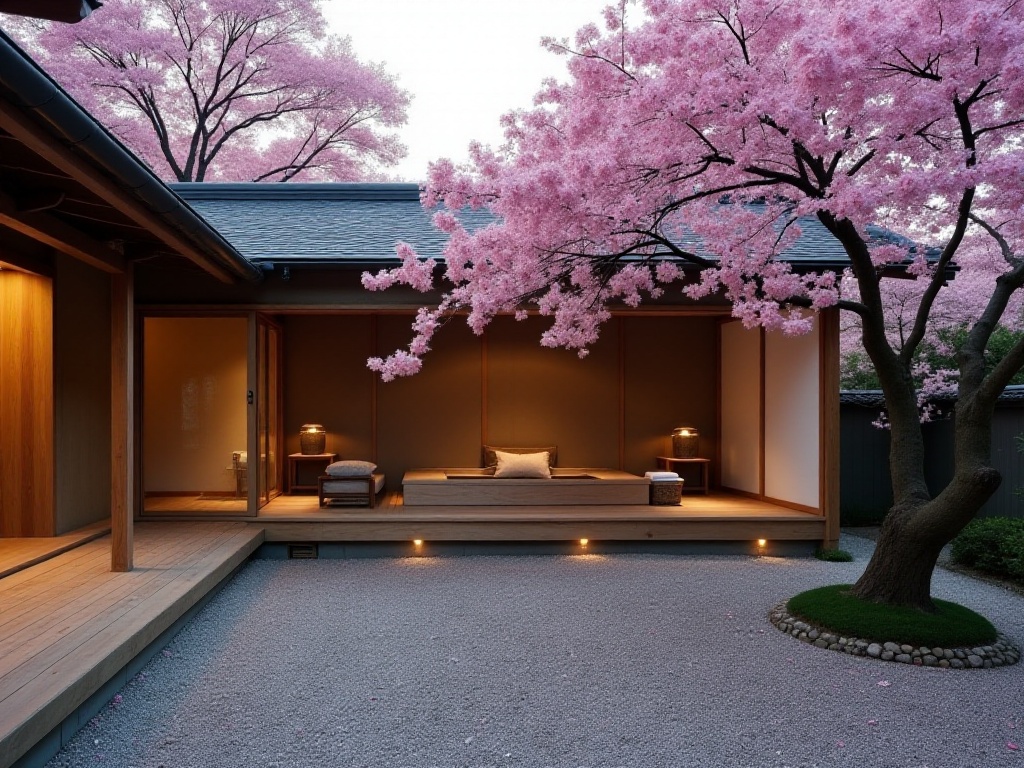
Selection Advice
Through years of experience, I've summarized several suggestions for friends trying luxury travel for the first time. Hope these help you avoid detours and find truly suitable luxury experiences.
First, clarify what you really want. Some think staying at good hotels is luxury, while others value experience uniqueness more. I suggest starting with Thailand's relatively low-threshold luxury travel. Thailand has high service standards, good value for money, and pleasant climate, very suitable for first luxury travel experiences. Consider combining Bangkok with Phuket or Koh Samui, experiencing urban luxury in the former and island resort life in the latter.
I remember a client who always thought herself a "backpacker" until I persuaded her to try Amanpuri Phuket resort experience. After returning she told me: "I discovered luxury travel isn't wasteful, but a way to make travel richer and deeper." With professional butler help, she didn't need to research transportation and restaurants, but could focus entirely on experiencing local culture.
Second, choose reliable service providers. Many institutions now claim to offer luxury travel, but not all provide truly quality service. Recommend choosing well-established agencies with good reputations. Internationally, Abercrombie & Kent, Remote Lands, Scott Dunn are trustworthy brands. Domestically, some boutique travel agencies focusing on high-end markets also provide good service.
When choosing service providers, here are some tips: see if they can directly answer your specific questions rather than selling fixed products; understand their relationships with destination hotels and service providers (good advisors usually have direct cooperation); ask how they handle emergencies (professional agencies should have 24-hour emergency response mechanisms).
Third, don't blindly pursue big brand hotels. Many think staying at Four Seasons or Mandarin Oriental equals experiencing luxury travel, but actually, some destinations' boutique hotels might bring more unique experiences. For example, in Marrakech, Morocco, while La Mamounia is famous, some converted ancient courtyard boutique riads might let you experience local culture more deeply.
I advise clients when choosing hotels to look beyond brands and hardware to what unique experiences they offer. For instance, staying at Armani Dubai Hotel isn't just enjoying luxury rooms but experiencing unique city views from the world's tallest building. At COMO Shambhala Estate in Ubud, you can experience Bali's most authentic wellness programs. At Tierra Patagonia in Chile, you can directly view one of the world's most spectacular natural landscapes - Torres del Paine National Park - from your room.
Fourth, balancing itinerary pace is very important. Many first-time luxury travelers often want to get their money's worth, resulting in overly packed schedules. But one essence of luxury travel is having enough time to slow down and experience deeply. I usually suggest clients stay at least 2-3 consecutive nights at the same hotel, leaving free time to "do nothing."
I once arranged a three-week Italy trip for a couple who originally wanted to cover Rome, Florence, Venice, Milan, Tuscany, and Amalfi Coast. After discussion, I persuaded them to choose only Rome, Tuscany, and Amalfi Coast, staying 5-7 days in each region. They later said it was their most relaxing and enjoyable vacation because they had ample time to discover hidden treasures rather than rushing to take photos.
Fifth, consider off-season travel. Many destinations not only have more affordable prices in off-season but actually better service quality as staff have more energy for each guest. Of course, prerequisite is understanding if local off-season climate conditions suit your travel plans.
Taking Maldives as example, although May-June is rainy season, actually most of the time




